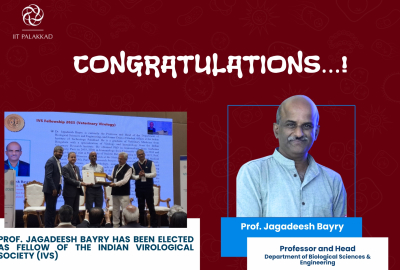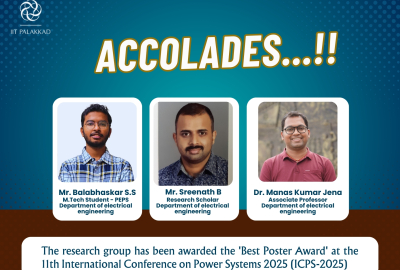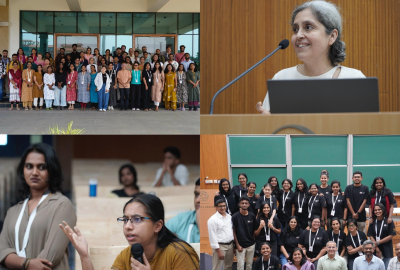
Pale Blue Dot Lecture 4: Statistics made fun and interesting
Dr. Manjunath Krishnapur, Mathematician, Indian Institute of Science, Bangalore treated members of the IIT Palakkad community and the public at large to an engaging, thought-provoking and witty lecture under the aegis of the Pale Blue Dot Lecture Series this evening. Through the lecture titled "Taking Chances; Making Decisions", the 4th in the series, organised at Victoria College Auditorium, Palakkad, Dr Manjunath illustrated how, like basic arithmetic, basic skills to read and interpret data are essential to survival in the modern world where surveys, polls, statistics from scientific studies, sports figures, economic data, etc. are thrown at us all the time. Using many half-real half-made-up situations to illustrate correct and incorrect ways to do this, he held the audience in rapt attention for over 90 minutes. Dr Manjuath has made outstanding contributions to the field of Probability Theory. His discoveries have been published in the most reputed Mathematics journals, including Annals of Mathematics, as well as in reputed Physics journals because of their relevance to Statistical Physics. It was easy to see how he is also a renowned and favourite "Math teacher" to many batches of students of IISc.
Outgoing Director IIT Palakkad, Prof P.B Sunil Kumar formerley welcomed Dr Manjunath and all gathered. Speaking on the occasion, Shri Ajayan, District Secretary, Palakkad Public Library fondly reminiscensed on the genesis of the Pale Blue Dot Lecture series as an attempt by the Public Library and IIT-PKD to partner and popularise science among the masses and leverage the benefit of an IIT in the district. He hailed the role that Prof Sunil Kumar played in ensuring the idea took shape quickly, and appreciated his work ethic and commitment to service that bore rich fruit for the Institute during his tenure as founding Director. The well-attended lecture sparked a good deal of interest and improved appreciation of concepts like random sampling, the merits of sample surveys, misused data, and the importance of 'big picture' thinking beyond what numbers may suggest at first glance.






